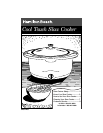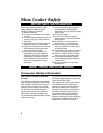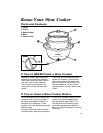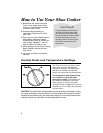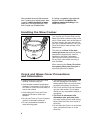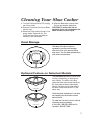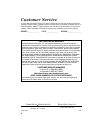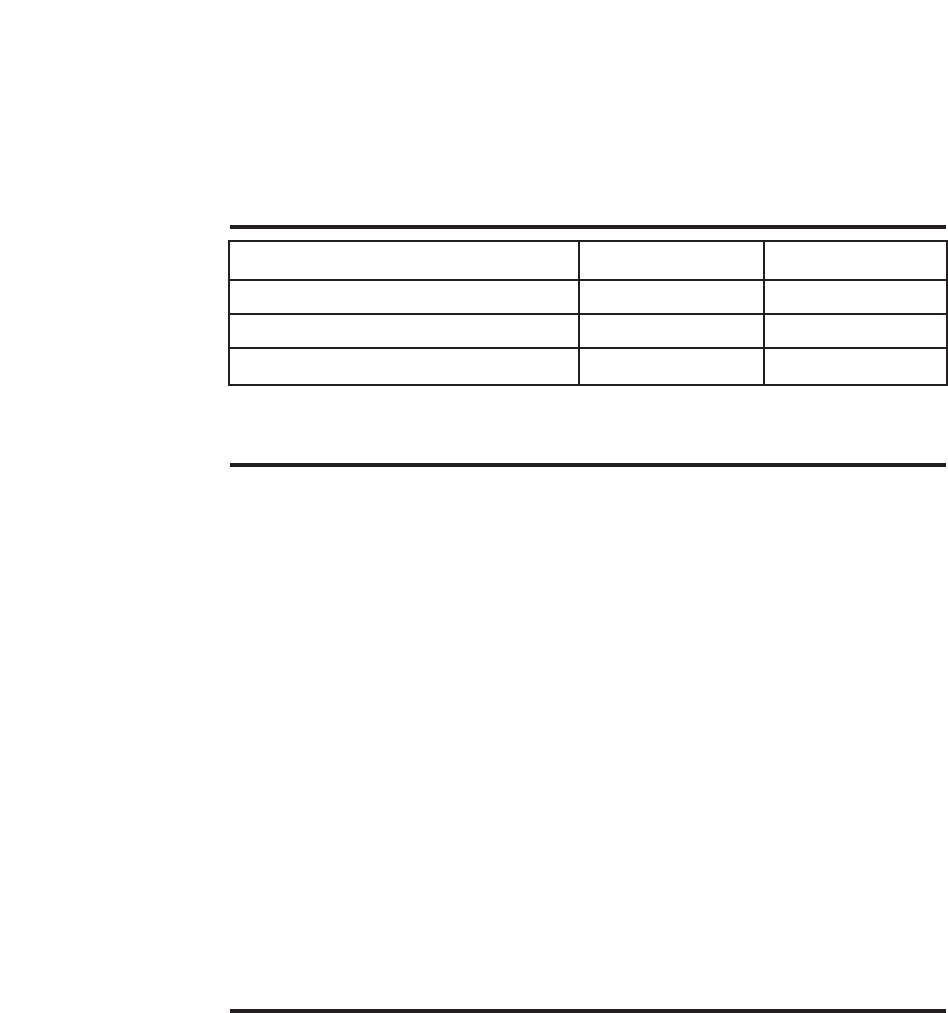
HEAT SETTING LOW HIGH
4 lb. Whole Chicken 6 to 8 hours 3 to 4 hours
3-4 lb. Beef Roast 8 to 10 hours 4 to 5 hours
3-4 lb. Boneless, Smoked Ham 6 to 8 hours 3 to 4 hours
5
The slow cooker should be at least
half-filled for best results.
The Cover of the slow cooker does not
form a tight fit on the Crock but should
be centered on the Crock for best
results. Do not remove the Cover
unnecessarily—this results in major
heat loss. Do not cook without Cover
in place.
Stirring is not necessary when slow
cooking. However, if cooking on High,
you may want to stir occasionally.
Slow cooking retains most of the
moisture in foods. If a recipe results
in too much liquid at the end of the
cooking time, remove the Cover, turn
the Control Knob to High, and reduce
the liquid by simmering. This will take
30 to 45 minutes.
Tips for Slow Cooking
If cooking soups or stews, leave a
2-inch space between the top of the
Crock and the food so that the recipe
can come to a simmer.
Many recipes call for cooking all day.
If your morning schedule doesn’t allow
time to prepare a recipe, do it the night
before. Place all ingredients in the
Crock, cover and refrigerate overnight.
In the morning, simply place Crock
in the slow cooker and select the
temperature setting.
Meat and poultry require at least
6 to 8 hours on Low. Do not use
frozen meat or poultry in the slow
cooker. Thaw any meat or poultry
before slow cooking.
Basic Cooking Chart/Hours Required
Adapting Recipes
Some ingredients are not suited for
extended cooking in the slow cooker.
Pasta, seafood, milk, cream, or sour
cream should be added 2 hours before
serving. Evaporated milk or condensed
soups are perfect for the slow cooker.
Many things can affect how quickly a
recipe will cook. The water and fat
content of a food, the temperature of
the food, and the size of the food will
all affect the cooking time. Food cut
into pieces will cook faster than whole
roasts or poultry.
Most meat and vegetable combinations
require at least 6 to 7 hours on Low.
The higher the fat content of the meat,
the less liquid is needed. If cooking
meat with a high fat content, place
thick onion slices underneath, so the
meat will not sit and cook in the fat.
Some recipes call for browning the
meat before slow cooking. This is only
to remove excess fat or for color; it
is not necessary for successful cooking.



